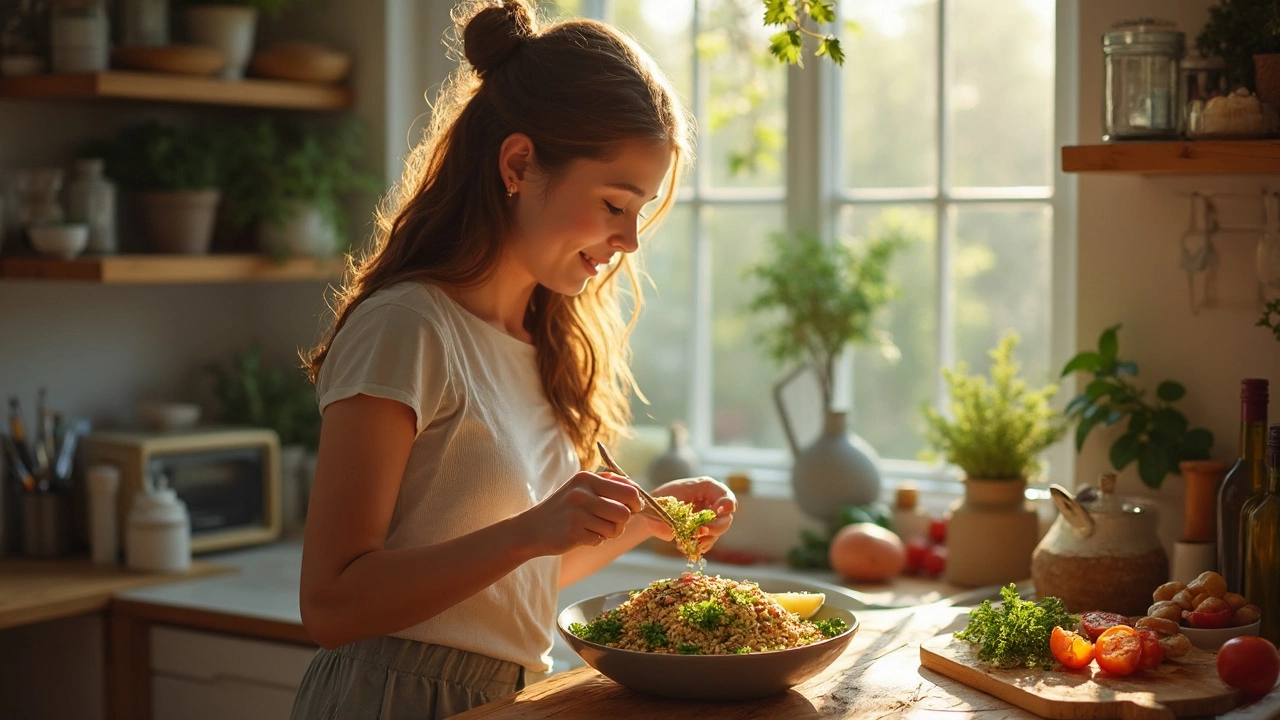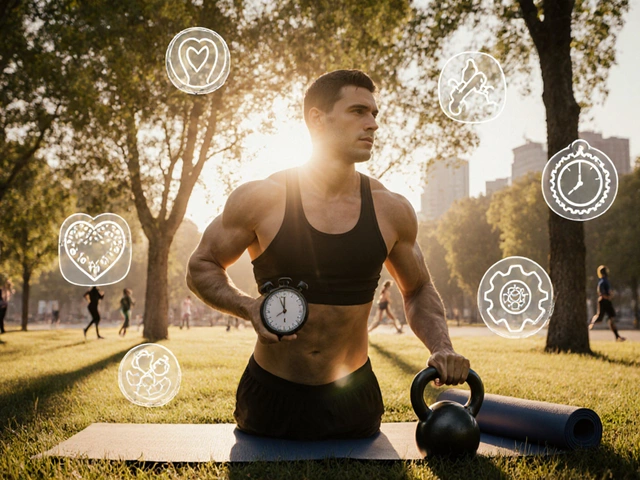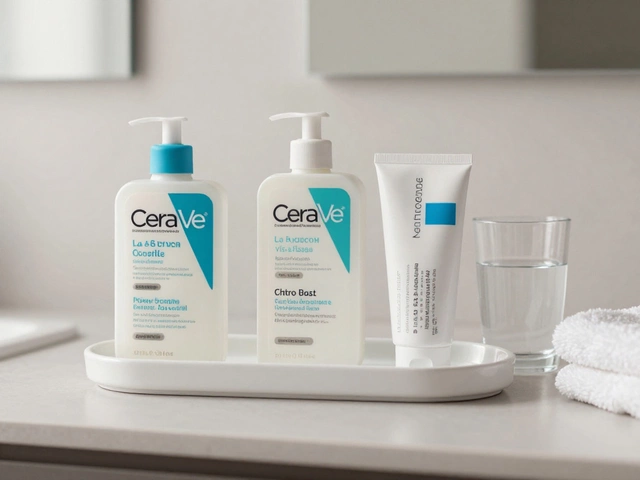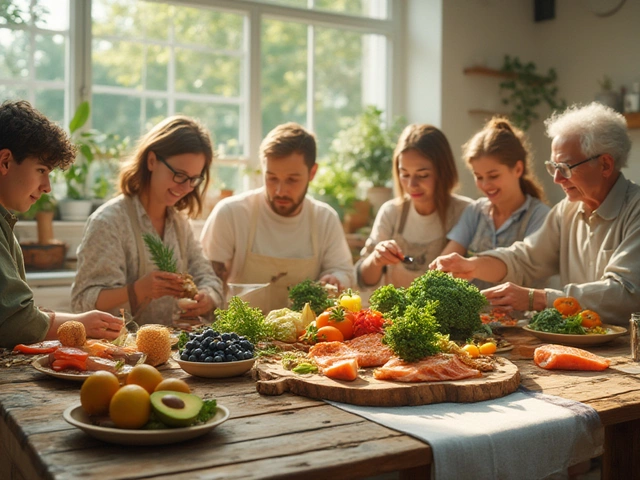Ever stand in the kitchen, hungry, but totally blank on what to make that’s both healthy and fast? You’re not alone. The easiest healthy meal isn’t some chef-level secret—it’s usually basic, filling, and takes less than 15 minutes. Think of meals you can toss together using stuff you probably already have: grains, vegetables, lean protein, and something to tie it all together like olive oil or a splash of lemon.
Let’s keep it real—nobody wants to spend an hour on weeknights slicing, dicing, and flipping through recipe books. Instead, what if you just grabbed a handful of pre-washed greens, a can of beans, and some cooked chicken or tofu? Throw it all in a bowl, drizzle some dressing or olive oil, and you’re done. That’s a meal you can actually stick with for the long haul because it’s quick, tasty, and makes you feel great after eating.
If you’re skeptical, here’s a fun fact: Research by Harvard’s School of Public Health suggests that simple meals loaded with veggies, grains, and lean protein drastically improve energy and mood—even more than fancy, high-effort recipes. Plus, using what’s already in your kitchen means less waste and less stress. No more endless scrolling for inspiration. You really can eat well without making it complicated.
- Why Simple Is Healthier
- Core Ingredients for Quick Healthy Meals
- The One-Bowl Formula That Always Wins
- Tips and Shortcuts for Busy Days
Why Simple Is Healthier
Sounds counterintuitive, but the easiest healthy meal is often the best thing you can do for your body and your schedule. Fewer ingredients means you’re more likely to skip all the sneaky sugars, sodium, and additives that pack the average takeout or frozen meal. When you keep things basic and fresh, you avoid the processed extras that can mess with energy and digestion.
Eating simple also helps with portion control. When a meal has tons of sauces, cheeses, and sides, it’s easy to lose track of what’s actually on your plate. With a straight-up grain, lean protein, and plenty of veggies, you know exactly what you’re getting. Plus, studies from the American Journal of Clinical Nutrition show that people who cook at home—even just basic meals—eat about 140 fewer calories per day than folks who rely on prepared foods or eating out.
- Simple meals let the natural flavors shine, making healthy food taste way better than you might expect.
- Less prep means you’re less likely to bail and order unhealthy delivery when you’re tired or stressed.
- Cooking straightforward meals encourages a routine, and routines are huge when it comes to sticking with healthy habits.
| Benefit | Why It Matters |
|---|---|
| Fewer Processed Ingredients | Reduces hidden sugars, salts, and unhealthy fats |
| Easier Prep | Less time in the kitchen = less stress |
| Better Portion Control | Helps manage calorie intake naturally |
By sticking with basic, wholesome foods, you’re not just saving time—you’re making it way easier to eat balanced, feel full, and stay consistent. And let’s be real, when something’s easy, you’ll do it more often. That’s half the battle when it comes to getting and staying healthy with easy healthy meals.
Core Ingredients for Quick Healthy Meals
You don’t need a giant shopping list for the easiest healthy meal. Stick with a few go-to ingredients that mix and match without fuss. Stocking up on these makes weekday cooking a breeze, and you’ll always have what you need to whip up something fast.
Easy healthy meal ideas start with these basic players:
- Pre-cooked grains: Brown rice, quinoa, farro, or even frozen microwave rice. These give your meal substance and fill you up without much effort.
- Canned or cooked beans: Chickpeas, black beans, or lentils add protein and fiber—no long simmering needed. Just rinse and toss in.
- Leafy greens: Baby spinach, kale, arugula, or mixed greens boost vitamins and take zero prep when you buy them pre-washed.
- Lean proteins: Rotisserie chicken, canned tuna, tofu, or even scrambled eggs cover your protein needs. Egg omelets take about five minutes if you’re in a real rush.
- Chopped or frozen veggies: Bell peppers, carrots, corn, or a broccoli-cauliflower mix can go from freezer to bowl without defrost drama.
- Simple flavor boosters: Olive oil, lemon juice, salsa, or a sprinkle of shredded cheese. These keep blandness at bay with hardly any calories.
Here’s a quick look at the nutrition you get from these basics:
| Ingredient | Main Benefit | Prep Time |
|---|---|---|
| Pre-cooked quinoa (1 cup) | 8g protein, high in fiber | 1 min (microwave) |
| Canned black beans (1/2 cup) | 8g protein, rich in iron | 30 sec (rinse) |
| Baby spinach (2 cups) | Rich in Vitamin K, nearly zero calories | 0 min |
| Rotisserie chicken (3 oz) | 23g protein, ready to use | 30 sec (shred) |
| Frozen stir-fry veggies (1 cup) | Lots of fiber and vitamin C | 4 min (microwave) |
Keeping these things on hand slashes your prep time and helps you dodge takeout temptations. Always rinse canned beans to cut sodium, and look for low-salt or no-salt-added options if you’re watching your blood pressure.
One more tip: Pick up a few flavor bombs—think garlic, sriracha, pesto, or a jar of pickled onions. A little goes a long way to make your meal pop, especially when everything else is pretty basic. This simple system actually gives you endless options without getting stuck in a boring food rut.
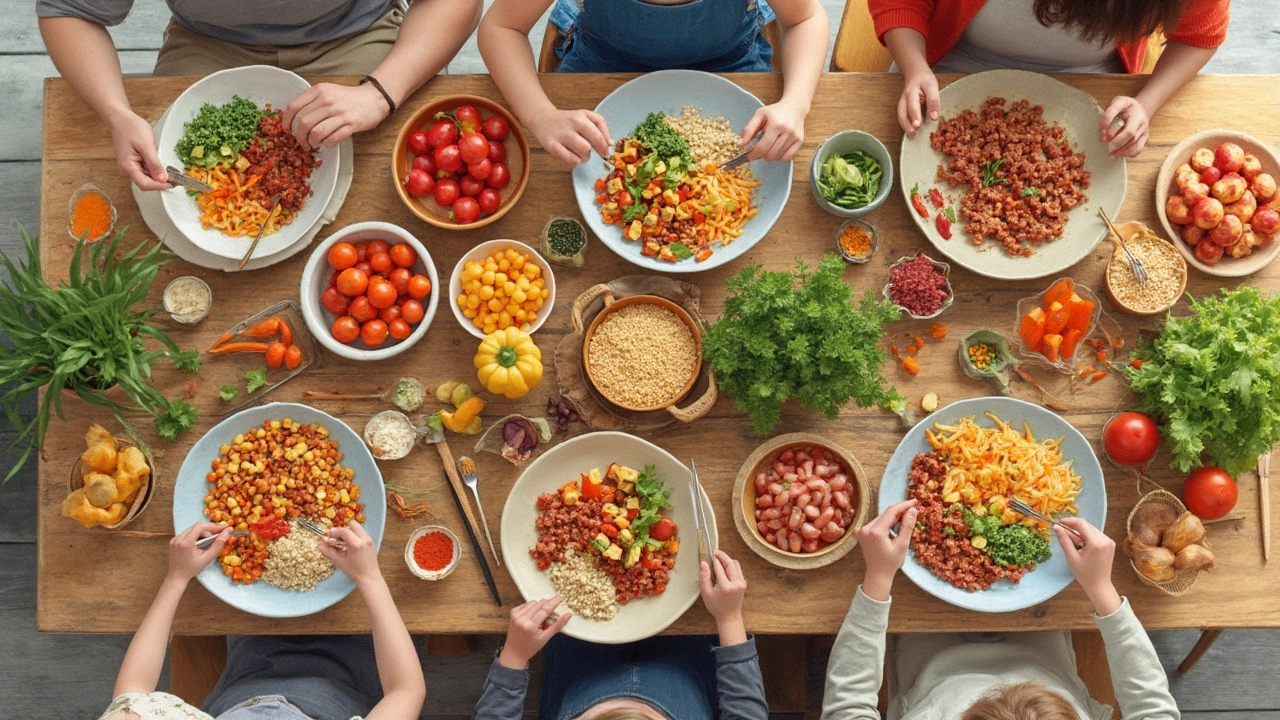
The One-Bowl Formula That Always Wins
If you’re tired of complicated directions or a pile of dirty pans, the one-bowl formula is a total lifesaver. It’s my go-to answer for the easy healthy meal dilemma. The best part? You don’t need to follow a strict recipe—just mix and match from each category, and you’re set.
Here’s how it breaks down. Think of your bowl in four main parts:
- Base: Start with something hearty: brown rice, quinoa, whole wheat couscous, or even canned beans. These options are loaded with fiber and keep you full. A half-cup cooked serving works for most folks.
- Veggies: Fresh, frozen, or even roasted leftovers. Aim for a couple of handfuls. Broccoli, cherry tomatoes, spinach, carrots, snap peas—whatever you like or have around. Dietitians love this step because most people don’t eat enough of them.
- Protein: Grab something easy: rotisserie chicken, hard-boiled eggs, tofu, canned tuna, or a scoop of chickpeas. For a solid lunch or dinner, you want a serving about the size of your palm.
- Flavor toppers: This is where bowls get fun. Add a spoonful of salsa, a squeeze of lemon, a drizzle of olive oil, or a dollop of hummus. Crumbled feta or chopped nuts are great too. Toppers make it taste amazing without much effort.
One tip: Prep the base and protein in advance, maybe on the weekend, so you can throw together meals in less than five minutes later on. Frozen veggies also save time and work just as well as fresh ones. Remember, studies actually show people who batch-prep these parts eat healthier all week.
The beauty of this one-bowl approach? It’s nearly impossible to mess up, and you avoid food waste by using up what you’ve already got. Plus, switching up just one component (like rice for farro, or chicken for chickpeas) keeps things interesting. No more mealtime ruts. The one-bowl formula is simple, fast, and proves you don’t have to make things hard to eat nutritiously.
Tips and Shortcuts for Busy Days
When your day feels packed and your energy’s running low, having a few lifesavers up your sleeve is key. Start by grabbing ready-to-use ingredients—frozen veggies, pre-washed salad mixes, rotisserie chicken, or canned beans. These don’t just shave off prep time; they make it nearly impossible to skip a meal just because you’re tired.
Batch cooking is a game changer. Cooking a batch of quinoa or brown rice at the start of the week means you can scoop out what you need later. It’s the backbone of just about any easy healthy meal you want to whip up: grain bowls, stir-frys, quick wraps, and more.
If you hate chopping, don’t stress. Pre-chopped veggies from the produce section cost a bit more but can save you so much time. Another time-saver: single-serve packets of cooked lentils or chickpeas. They’re easy to just toss onto a salad or into a soup.
- Keep dressings and dips on hand (think hummus, tzatziki, or a vinaigrette). They can quickly turn plain ingredients into a crave-worthy meal.
- Try sheet pan meals: Scatter protein and veggies on a baking tray, toss with olive oil and seasonings, and bake. There’s barely any cleanup and you can cook multiple servings at once.
- Mason jar salads are not just for Instagram. Layer your favorite salad ingredients in a jar for a grab-and-go lunch—just add dressing before eating so nothing gets soggy.
If all else fails, breakfast for dinner works. Scramble some eggs, toss in spinach, and top with avocado. It hits all the marks: fast, healthy, and totally satisfying. And if you can freeze leftovers or ingredients, do it. It’s one of the simplest ways to always be one step ahead on your busiest days.
